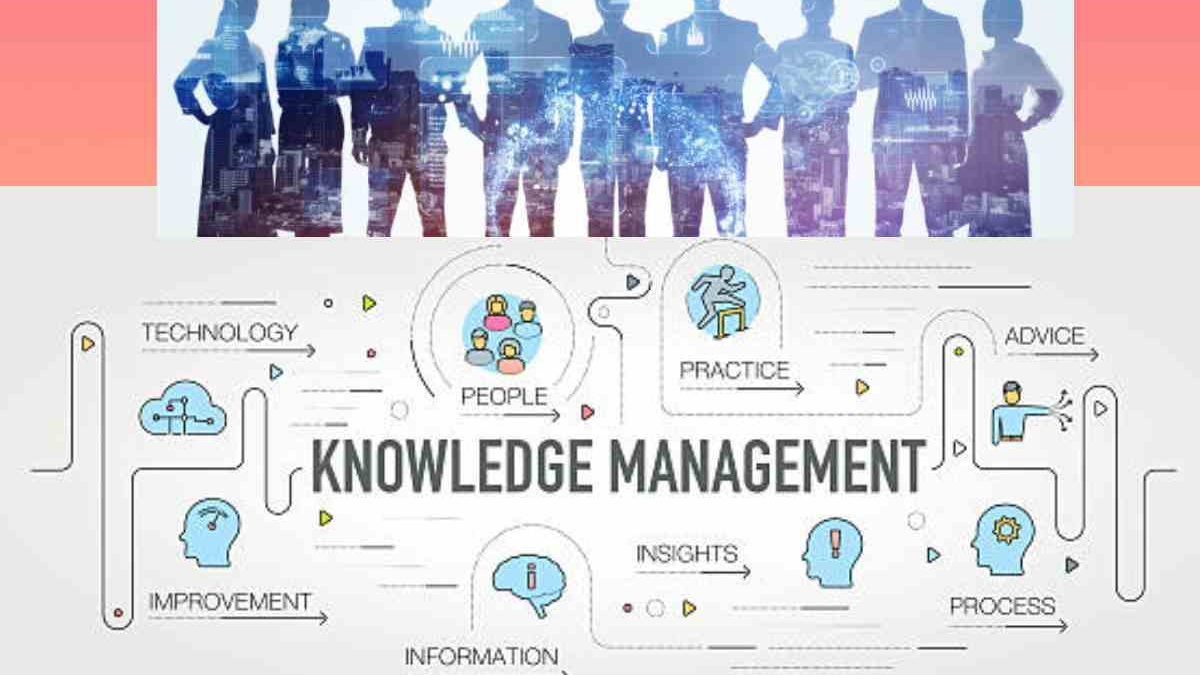One-line definition of knowledge management is the process of collecting, distributing and using knowledge effectively within an organization. Since it was first offered in the early 90s, there has been no better definition than this. However, you can’t explain the knowledge management process without learning its origins.
Most organizations saw the importance of intranet when the internet came into the picture. An intranet is a subset of the internet (in-house) that forms a wonderful technique and tool within an organization that makes data accessible and easy to share among different entities of the same organization despite the geographical difference. The same companies realized that building techniques and tools like best practice databases, dashboards and expertise locators will acquire complex and dispersed expertise. The thought name of this new technique was Knowledge Management.
Knowledge Management can be seen trying to undertake the replication of the information environment suitable for company success and deploy knowledge broadly across the firm. Now is common to see organizations at their best thanks to knowledge management for building information workers.
What does Knowledge Management Entails?
Effective knowledge management requires more than proactive strategies. Therefore, you should incorporate several new processes to implement KM effectively in your organization. Organizations need to discover the available knowledge, learn how to use the existing information to add value to the company and set up a plan to create more knowledge.
Knowledge Management Cycle
Knowledge Discovery
Every enterprise has more than one source of knowledge, from records and data to employees. This can include the hard drive of data, the unique expertise employees develop on the job, employees’ experience or skillset and the education staff bring to the workplace. The organization can positively benefit from this set of knowledge only after proper analysis.
During the discovery stage, your organization should discover all knowledge sources, with much emphasis on vulnerable information (information that can be lost easily). Knowledge discovery is not that hard, provided the organization has a strong and clear understanding of how and where knowledge flow within the organization.
Knowledge Collection
Data and knowledge collection create an effective foundation for building future processes. Because of that, organizations should avoid incorrect or sloppy knowledge collection since it can lead to poor decision-making without fully understanding the organization and its potential. Auditing external knowledge sources, staff expertise and documentation is the best approach to collecting relevant knowledge.
Organizations can use a wide choice of tools when collecting knowledge ranging from metadata, automated surveys and document scanning. Most companies make knowledge management part of everyday processes by redefining all internal processes. This makes capturing and collecting institutional knowledge easier. It can be done through an in-depth offboarding procedure or daily employee feedback.
Knowledge Assessment
This process entails a deep analysis of all available knowledge collected through capturing and collection stages. Information and data should be thoroughly assessed and organized into searchable, easily accessible and structured forms. The main aim of assessing gathered knowledge is to ensure it can offer value to people who will use it in the future, is accurate and up to date.
Teams must develop the best ways to share knowledge within the organization to improve overall performance. Also, knowledge assessment ensures staff gets all the knowledge they need to maximize their performance. Taking advantage of the right knowledge management system makes the assessment process easier by allowing company leaders to segment, organize and store a far-reaching knowledge database.
Knowledge Sharing
The main reason for having knowledge management is to make information readily available to staff to help them gain the expertise to do their work easily and to the best of their abilities. Therefore, you should start planning an easy way of sharing knowledge after building a detailed and accurate knowledge body relating to your organization. Depending on your company’s needs and structure, you can use some proven methods of sharing knowledge among employees.
Despite the fact that there are many ways of sharing knowledge and information within the organization, one thing should remain the same: creating a routine shift to learn and develop. The best knowledge management system will prioritize and reward knowledge/information sharing. Because of that, employees and other team members will have an ample atmosphere to learn from each other and teach each other.
Knowledge application to the organization
This is where the organization starts benefiting from knowledge management. Discovering, assessing and storing institutional knowledge is a drop in the ocean. Your staff incorporating the newly acquired skill in their routine work will bring a wide range of benefits in accuracy, productivity and decision-making abilities hence innovative employees.
Knowledge creation
After learning from previous knowledge, the only sensible thing is to create more knowledge. This is the final knowledge management stage. Knowledge management should not be viewed as one and done process since it won’t offer the outcome you are searching for.
Takeaway
Knowledge management is a never-ending process that tries to bring the best out of the employees and the company’s performance using the available expertise. The best thing the organization should do is to come up with creative and innovative ways to pass the new knowledge to future users. Therefore, whether it is discovering more efficient approaches to doing things, new techniques of solving problems or an effective way of data capturing, the organization should be at the forefront in making it happen.

